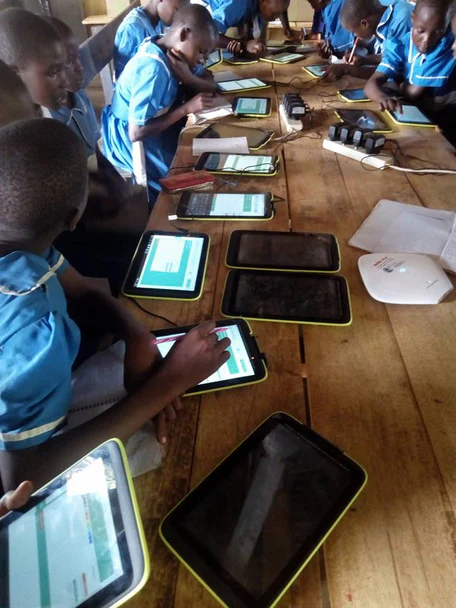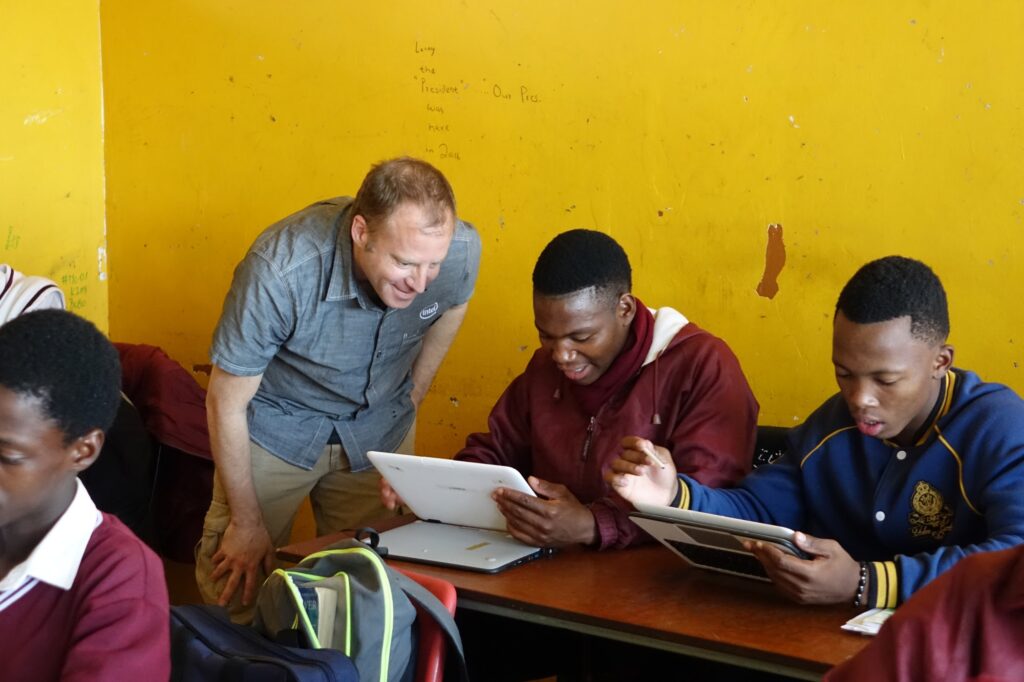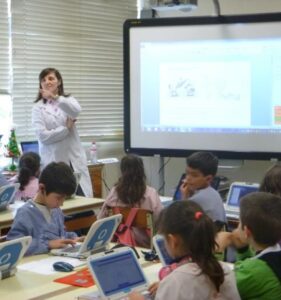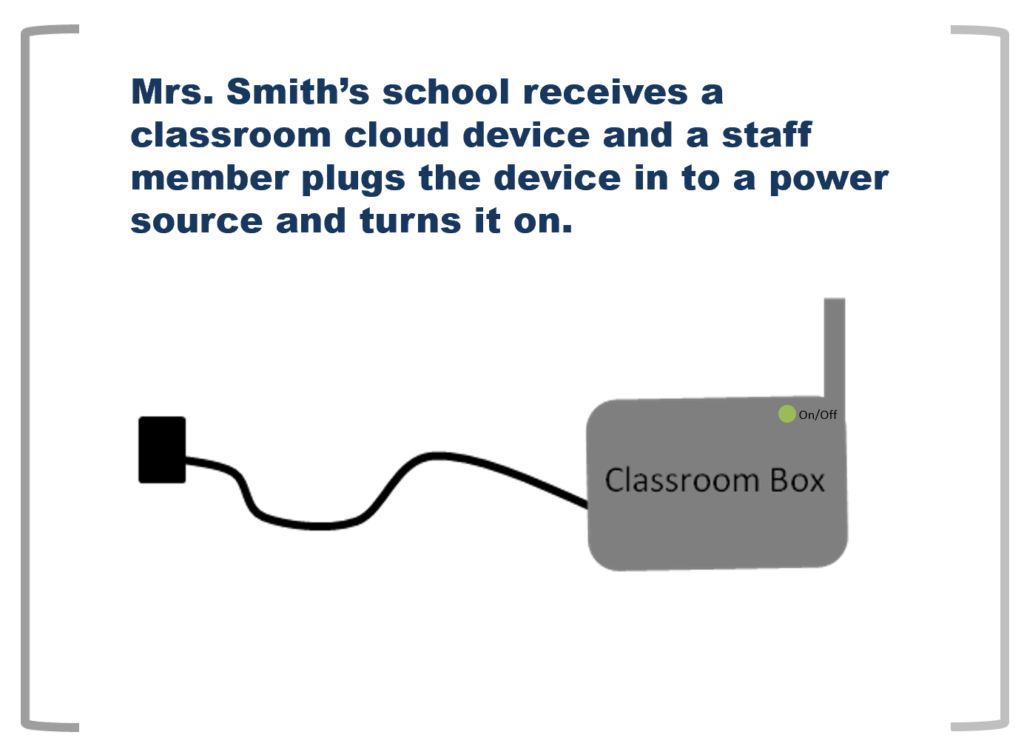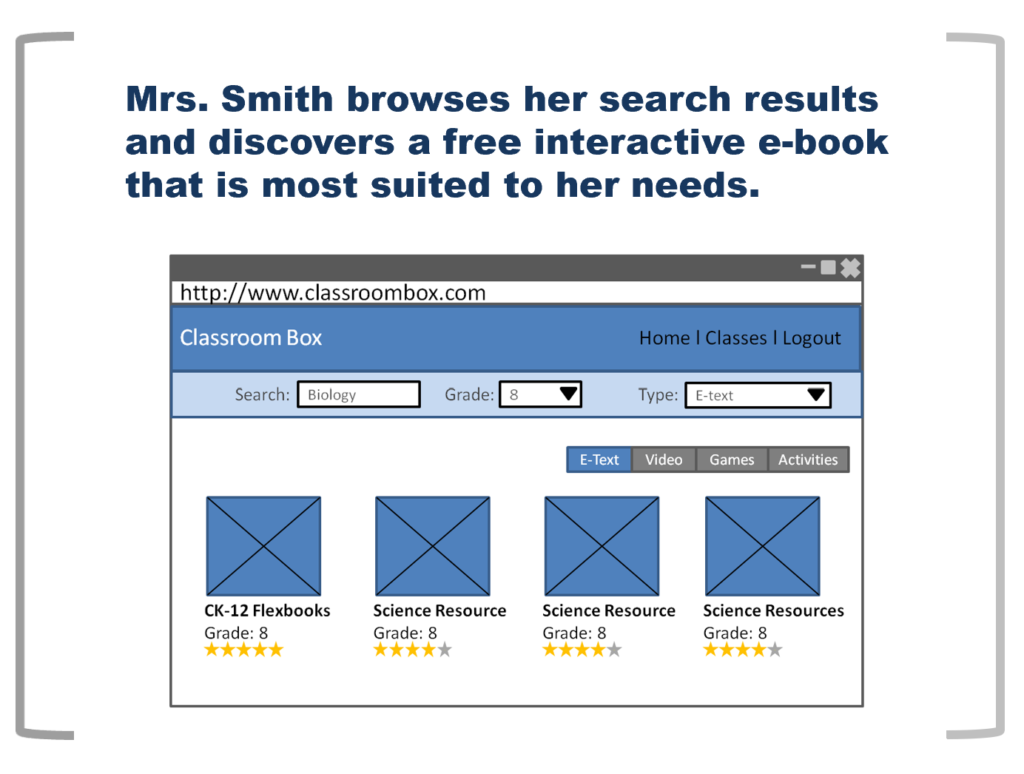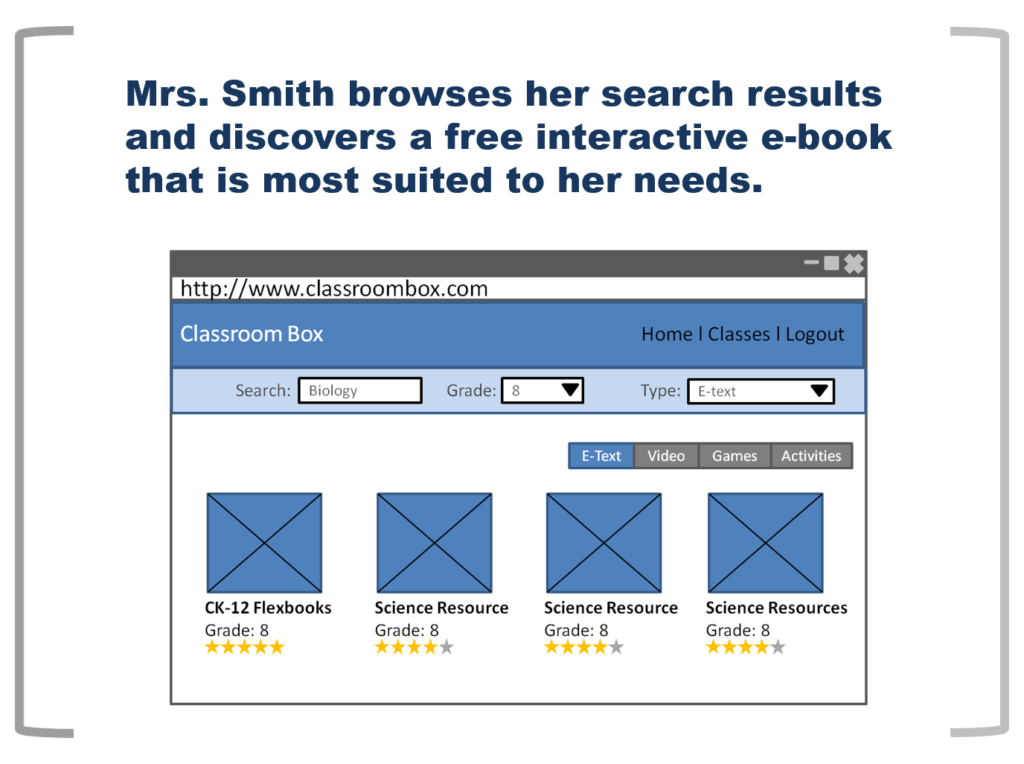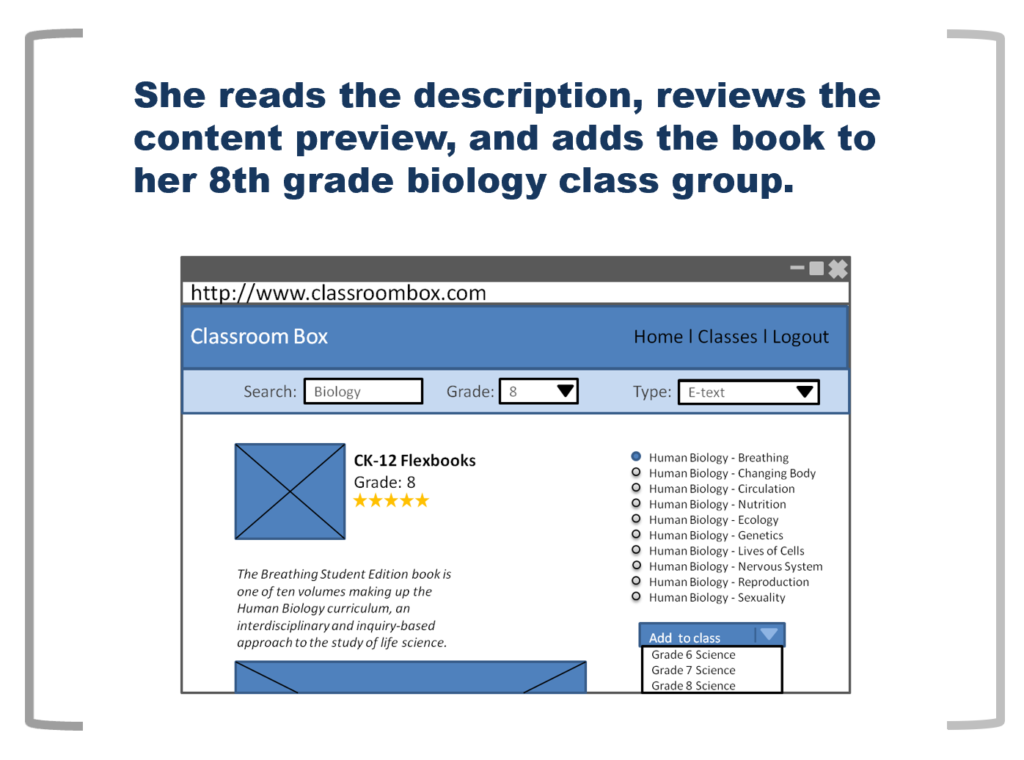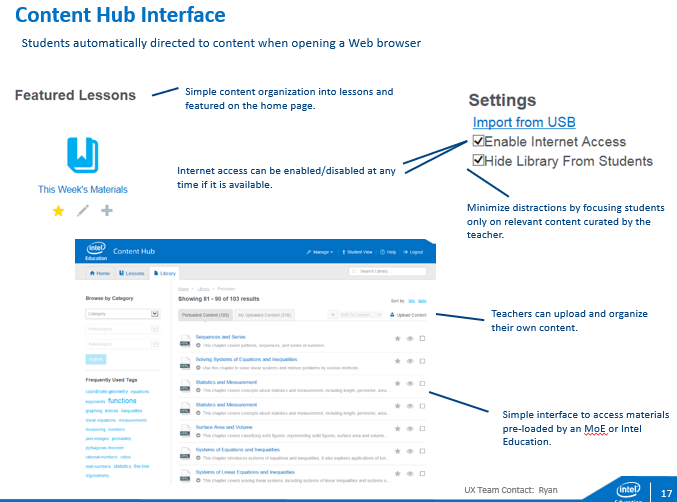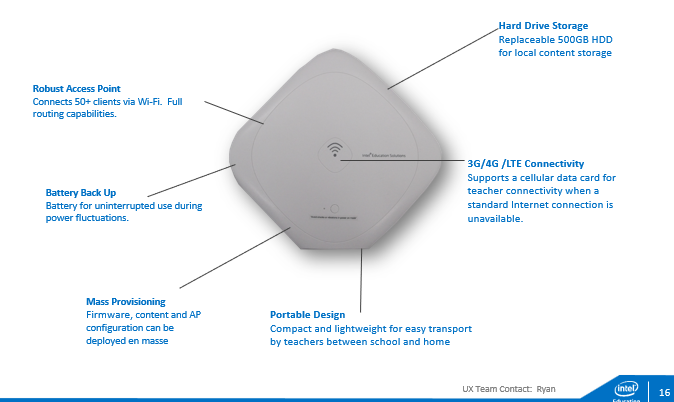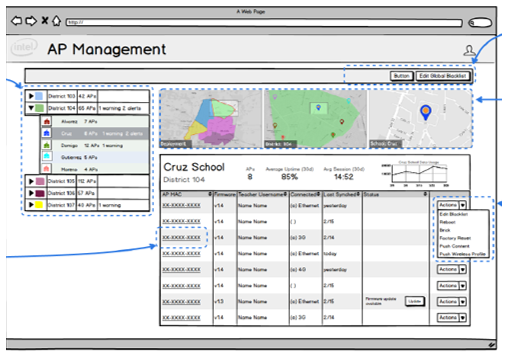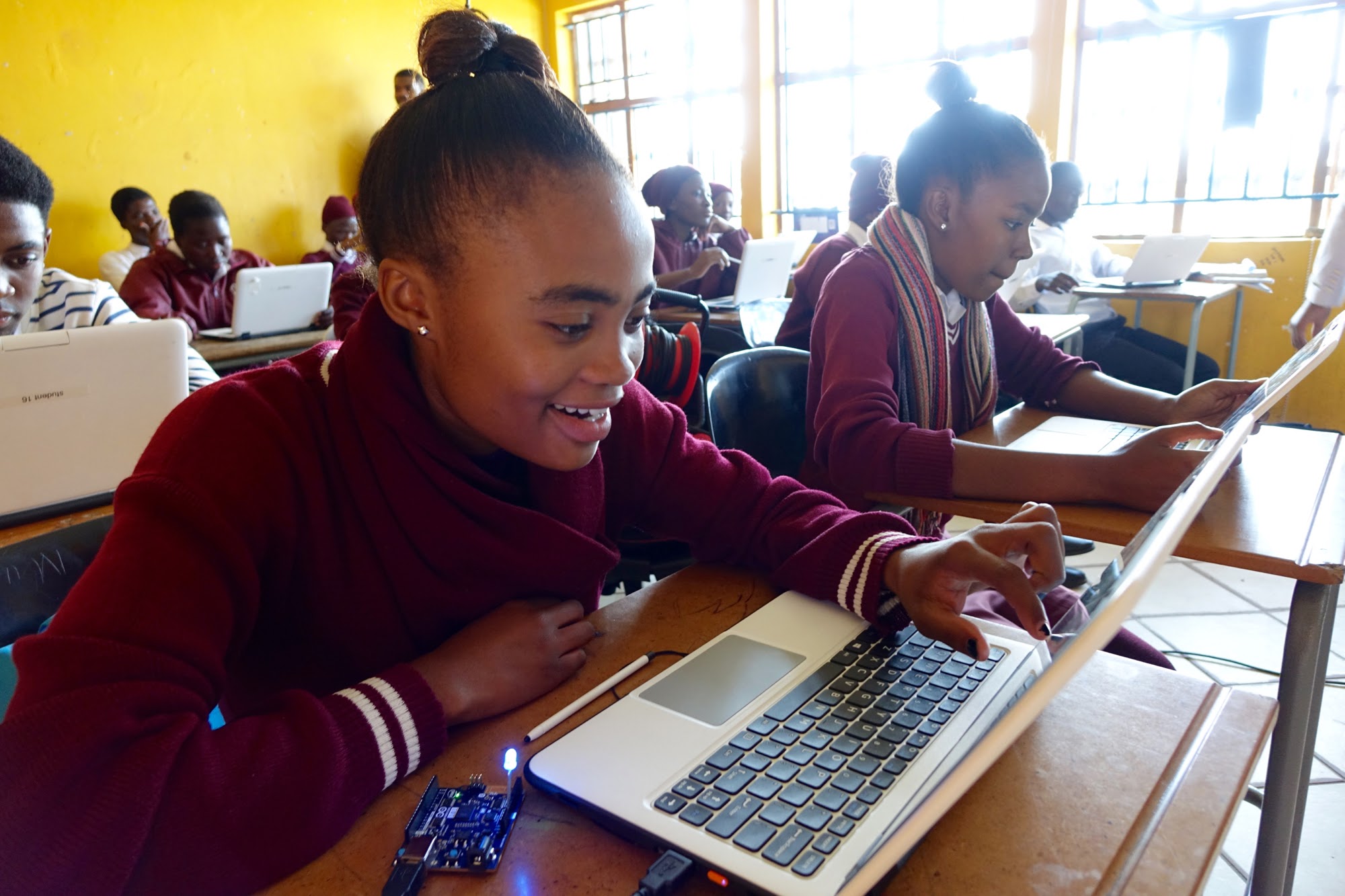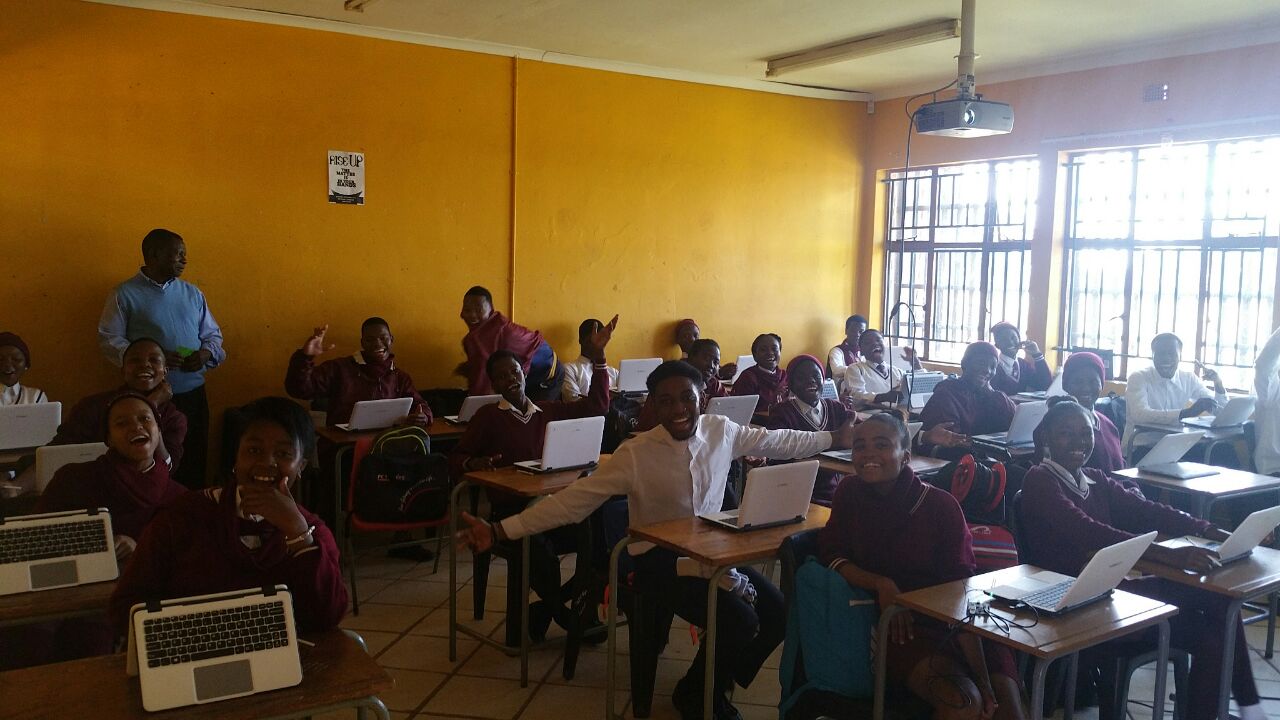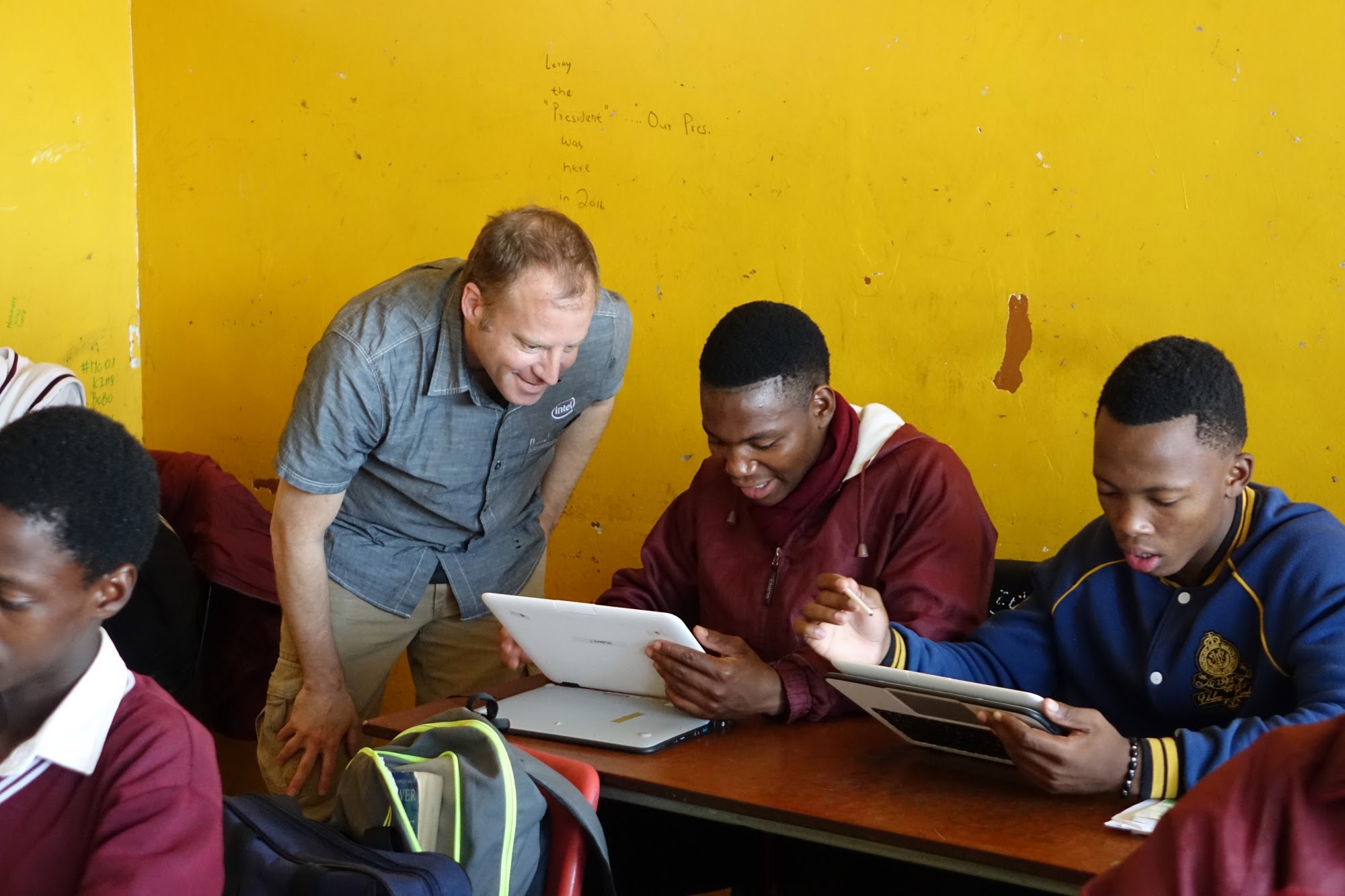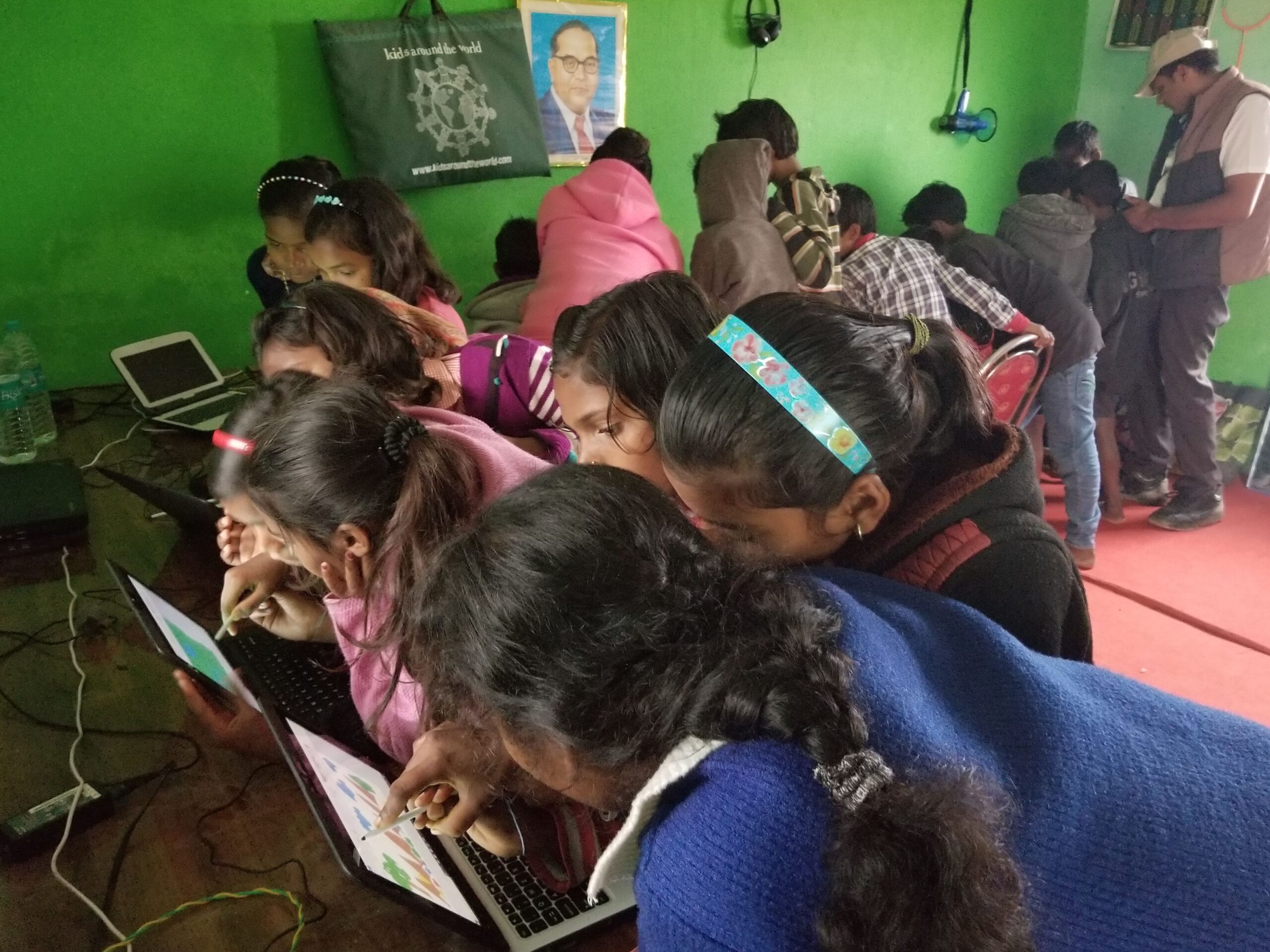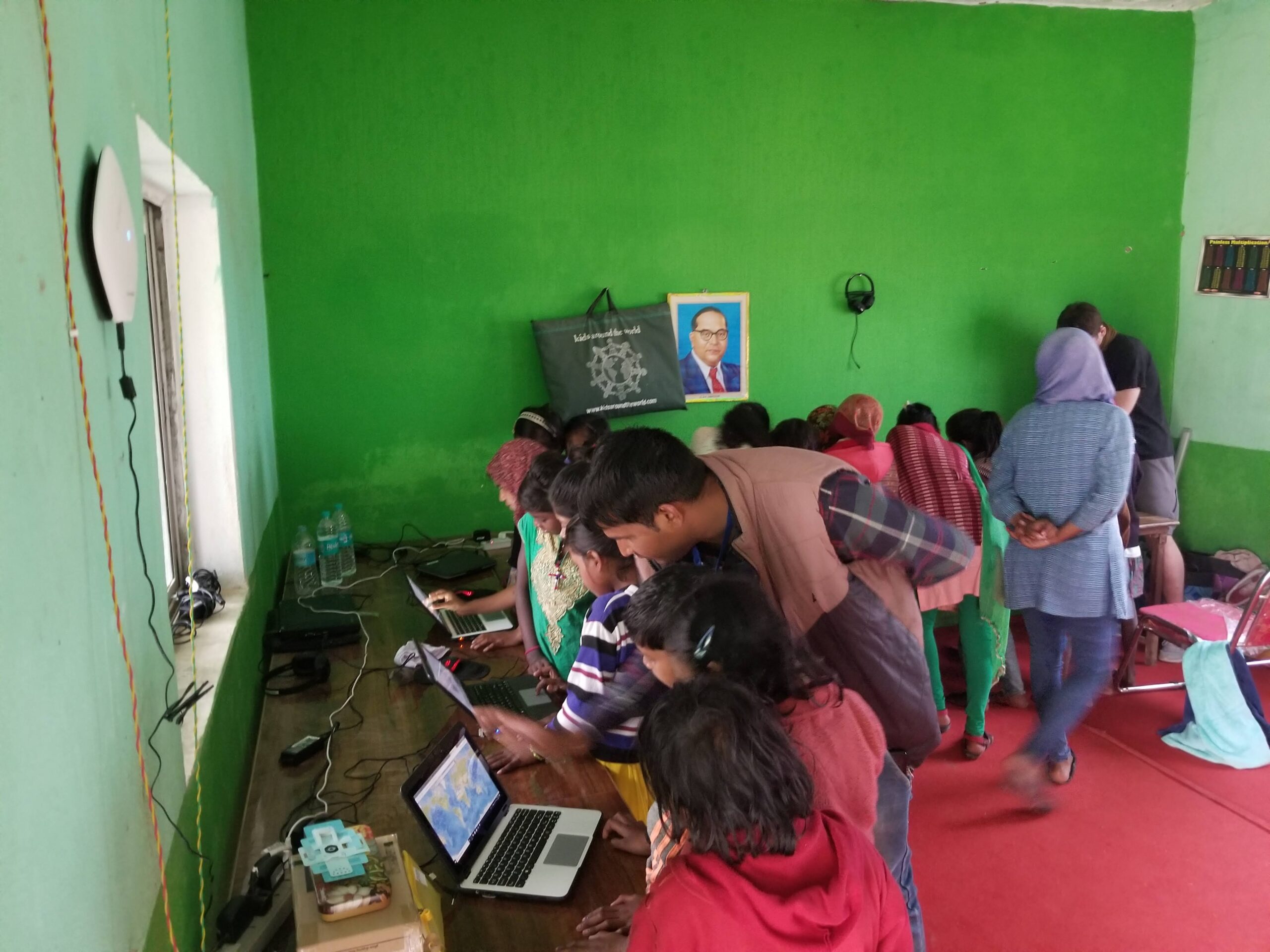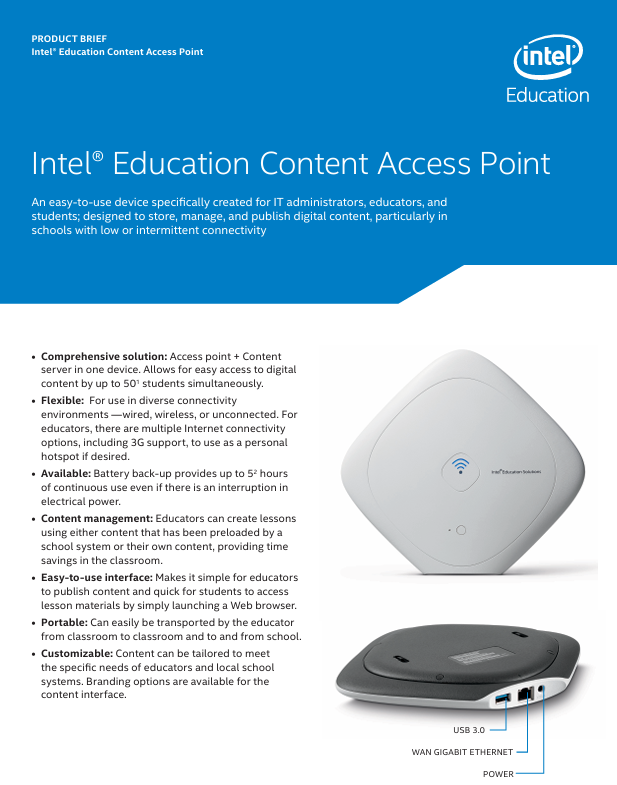Students are automatically directed to learning content when a Web browser is launched from their devices. Content accessible directly from the home page of the Lesson Planner saves valuable classroom time by focusing student on materials rather than requiring them to search and navigate.
Teachers must have unfettered access to educational resources and be able to deliver those resources to students at the right moment without taking up additional time managing the classroom or technology.
IT administrators are responsible for ensuring the content access points are accessible throughout a school system and the content is relevant and up-to-date for teachers needs. IT administrators in emerging markets are often not formally trained and may be volunteers with other job responsibilities.
Publishers are seeking a simple means to distribute interactive learning materials to school systems via SaaS-based revenue models. Unavailable or unreliable broadband Internet connectivity has been a barrier to actualize that vision until now.
